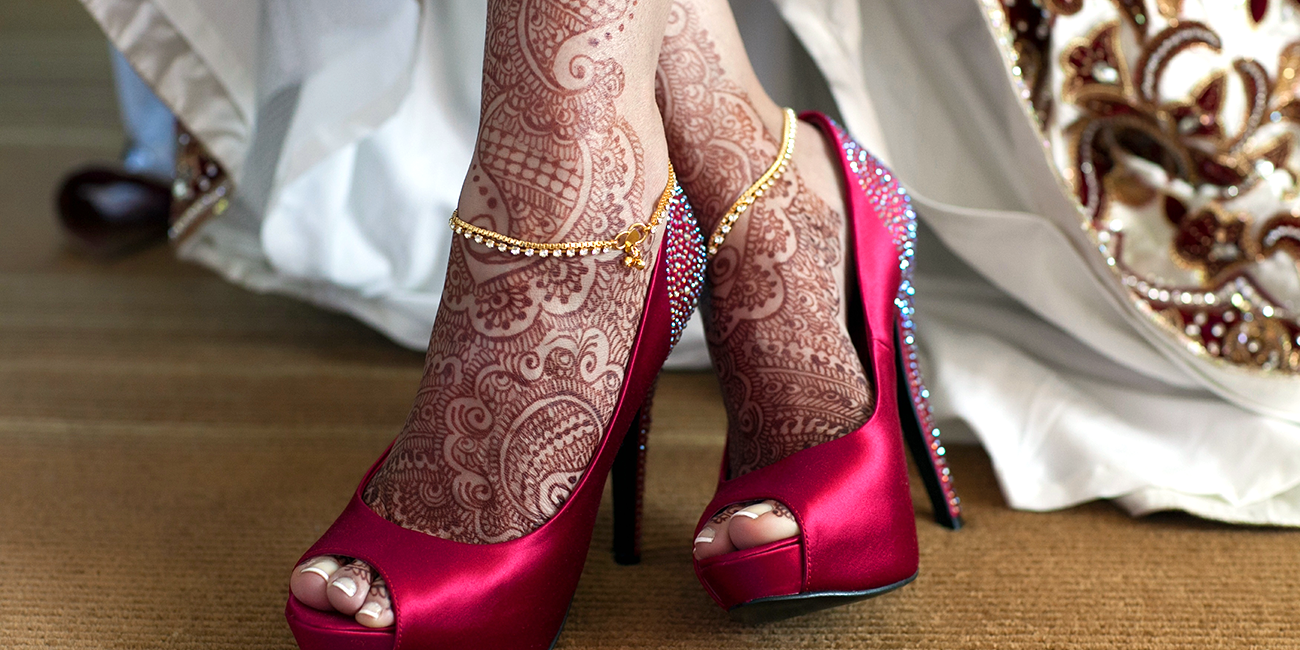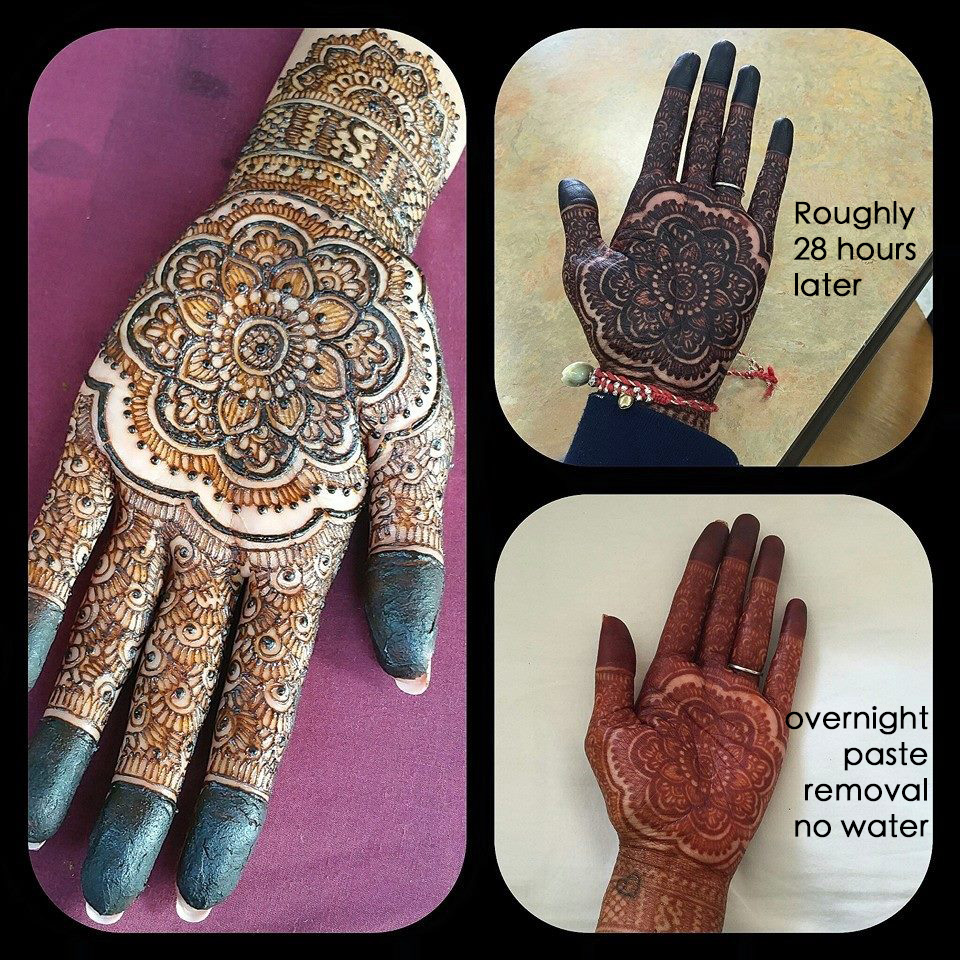
Taking Care of your Bridal Mehendi
Contrary to the belief that mehendi has to be done a day before your event, it is best to get it done 2-3 days before. Mehendi reaches its peak color about 48 hours after it has been removed. If you are not familiar with the mehendi artist, you should always do a trial run with them. This allows you to check the quality of the design and color of the mehendi. I often tell my clients to do this but influence from others leaves them misinformed. A trial assures and reiterates what I am advising.
Some important steps to take to get a good color:
Ask the artist if they are mixing their own mehendi or bringing pre-made cones. Pre-made cones are usually full of chemicals and the color can be dicey. If the artist is mixing their own mehendi please make sure you follow only their instructions as they know what works best to achieve optimal stain.
Bridal mehendi paste has to be on for a minimum of 6 hours. If I do the bride's mehendi in the evening, I ask her to keep it on all night. If it is done during the day, the bride can take it off at night.
A lemon-sugar solution needs to be applied 2-3 times. If this is overdone, it can lead to killing the mehendi stain sometimes.
If the mehendi is done in the evening I ask the bride before she goes to sleep to wrap the design in toilet paper like a mummy. Old school belief is that mehendi should be wrapped in plastic bags. This is a myth. With plastic wrapped around the hands and feet there is no air circulation and this releases a lot of moisture which can ruin the design. Toilet paper lets the air circulate and it also makes the bride feel secure that the design is not going to fall all over the sheets.
If the bride gets cold easily it is advisable for her to sit in a warm area to get her mehendi done. Mehendi brings down the body temperature and allows for a comfortable atmosphere. The warmth helps the mehendi dry faster too and there are less chances of accidents happening. The more heat you give your mehendi the darker it gets.
When the mehendi is removed it should not be washed but scraped off. Once scraped off, put some oil (preferably mustard for the heat factor) and massage it gently over the design. This will remove all the stickiness of the lemon sugar. You can wipe this off with a paper towel. Keep the mehendi away from water for a minimum of 2-3 hours after it has scraped off.
Please remember:
Palms get the darkest in comparison to arms and feet.
If the mehendi quality is not good, then even with all the instructions stated above, your mehendi will not get optimum color. For a wonderful design and stain it is always good to hire a reputable artist who mixes their own mehendi and leads you through a thorough process of aftercare.
 Stain progression of @jknijjar who was kind enough to send me pictures. The bottom right was taken after overnight paste removal and the top right is next day roughly around 28 hours after paste removal. This bride wanted a real dark color so she kept her mehendi overnight. She got her wish.
Stain progression of @jknijjar who was kind enough to send me pictures. The bottom right was taken after overnight paste removal and the top right is next day roughly around 28 hours after paste removal. This bride wanted a real dark color so she kept her mehendi overnight. She got her wish.
